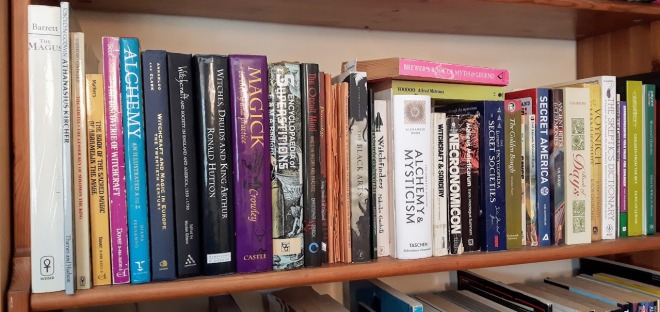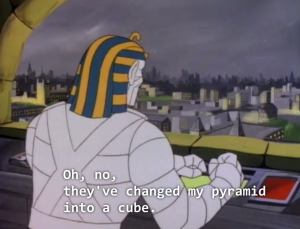So my history class is currently in the middle of its unit on the ancient world, much of which focuses on forms of government — y’know, monarchy, democracy, oligarchy, all that kind of thing. And that means contrasting classical Athens and Sparta.
One of the problems of teaching history in the overview kind of system the curriculum we’re using demands is that you tend to pick particular places as examples and then not look at how they changed over time. It also tends to reduce things to a simplified view of what they were like, but that’s unavoidable when you’re teaching a lot of material in a limited space of time.
Now, there’s nothing wrong with generalisations per se. They’re just part of how we think, and they have upsides and downsides like everything else. But it is a problem when we take the simplified version of things — which is naturally a little extreme — and then use it as evidence of a society that was super extreme.
Take Sparta for example. Ever since 300, the classical wargamer’s obsession with Sparta and the Spartans has spread into popular culture in a way that is … unfortunate. Partly this is a success for the way that the Spartans viewed themselves, but partly it’s a problem, since people draw conclusions about what is or isn’t likely or possible in the real world based on an example that is itself a distorted view of the real thing.
Let me therefore just introduce some additional info about Spartan society and the Spartan military that you might not be aware of. People who really study classical history in detail know all this stuff, but since I wasn’t really one of them for most of my life, I didn’t know any of this until a year or two ago. I am still not an expert, so please forgive me if I overgeneralise; I hope that my main point will still be clear.

So: the Spartan military. It is absolutely true that Spartan citizens — that is, male members of Spartiate families — did undergo a rigorous programme of military education that produced people who were essentially full-time professional soldiers. Indeed, Spartan law prohibited citizens from having jobs so that they could focus on army life and training. Supporting a full-time army is an expensive task, and it required a lot of commitment from a state that wasn’t super wealthy. If all the Spartans had to rely on militarily was their actual citizens, they would never be able to meet the manpower demands of a prolonged conflict.
Of course, most people in the Spartan (or Lakonian or Lakedaimonian or whatever you want to call it) state weren’t citizens at all. And I’m not just talking about women and helots, either: the citizens of surrounding towns weren’t Spartan citizens, since they weren’t Spartiates, but they were also required to fight in the army. In the campaign leading up to the battle of Plataea, we hear that the Spartans supplied 5,000 Spartan hoplites and a further 5,000 perioikoi hoplites. These perioikoi were inhabitants of other areas ruled by Sparta — the name literally means “near the house” — and unlike Spartiates they were allowed to have actual jobs. However, they also fought in the army and indeed served, in the later Spartan army, in the same morai or divisions as Spartiates.
In addition to the periokoi there were also skiritai, inhabitants of another Spartan-controlled region who served as peltasts, or medium-light infantry. Once the skiritai gained their independence the Spartans were forced to fill the gap by hiring mercenaries. And there’s some evidence that the Spartans used their helots (slaves or serfs) as psiloi or light infantry.
In fact, we even find evidence of helots fighting as hoplites. In the late 5th century, helot hoplites fought for the Spartans and were freed at the end of the campaign. These former helots were called neodamodeis (“new citizens”), and clearly they were able to fight effectively despite not having had a lifetime of brutal military education. In the aftermath of the battle of Leuctra in 371, the Spartans tried to make up the loss of men (they got whomped by the Thebans) by offering to free any helot who volunteered to fight; they got thousands of volunteers.
So far from the picture of a society focused exclusively on war and crunches, we get a more complex picture of a society with a military aristocracy who pride themselves on martial virtue and who form the elite corps of a larger army which has all the regular-Joe soldiers you’d expect from an army of the age. That’s much more plausible than the idea of a society where all the men are made of leather and abs and just think about fightin’ all the time.
But if that’s the case, where do we get these exaggerated ideas of Spartan manly-manness? It’s a combination of factors. First, both contemporary accounts and the work of later historians tend to focus on the things that are unusual about a given society. So when Plato talks about Sparta as a “timarchy” — a military state — he’s talking about the ways in which it was different from other Greek societies, and perhaps taking the ways in which it was similar for granted. Additionally, Greek sources tend to think about citizens first and foremost, with others often being kind of invisible. When we think about ancient Athens, for example, we tend to think of the political role of an Athenian citizen, which is certainly an interesting thing to think about — but even in that famed democracy, actual citizens probably made up only 10% or so of the Athenian population (citizens were free adult males born to two citizen parents). So when Greek writers talk about “Spartans” they mean Spartan citizens, even though Spartan citizens were actually a minority of all the people living in the Lakonian state. Most of the written evidence concerns Spartan citizens, and most of the good stories are about Spartan citizens, so it’s easy to make the mistake of thinking that Spartan citizens were typical.
Anyway, I know I’m always going around saying “it’s more complicated than that” when I look at portrayals of historical periods in the media, so I thought I would take a moment — more of a moment than I anticipated, actually — to give a worked example of that greater complexity.













